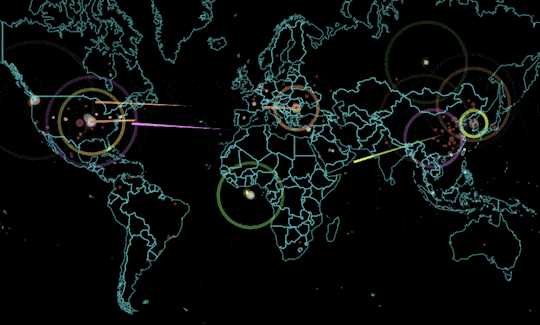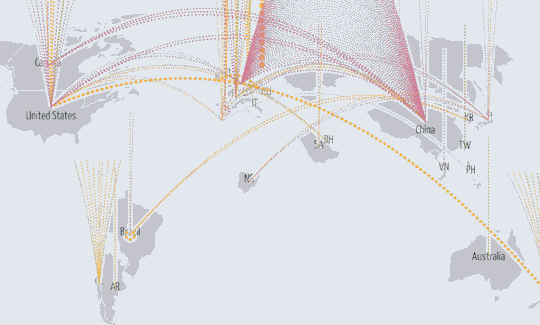How to Watch Worldwide Cyberattacks — Live!

Adulterers around the world are wetting their collective pants over news that notorious cheating site Ashley Madison has been hacked — with the hackers threatening to leak the site’s user data if it isn’t shut down.
Of course, that’s not the only digital break-in to make headlines lately. Earlier this month came news that the U.S. government’s Office of Personnel Management had been compromised, risking the personal data of 22 million people. And before that, it was health-insurance company Anthem, an attack that endangered information on about 80 million people.
If reports like these have you thinking that cyberattacks are becoming more common, then you should check out the four sites below: They purport to provide real-time maps of the sources and targets of hacking attacks taking place right now all over the world.
(Of course, these maps just happen to be provided by security vendors who have no reason at all to exaggerate the threat.)
Norse Attack Map

Norse is an Internet security company that helps companies prevent and deflect malicious attacks. And to give you a better idea of how many attacks it could help prevent, it has created its Norse Attack Map.
The image above — which looks like Missile Command on steroids — shows just a snippet of hacking attempts around the world, the countries from which they originate, and the countries that they are attacking.
In reality, the attackers are hitting what Norse calls honey pots — special traps designed to detect unwanted network intrusions by hackers. It’s important to note that the location an attack comes from isn’t necessarily its true origin, as hackers can make an attack look like it’s coming from one place when it’s really coming from another.
Digital Attack Map

Created by Google and the network security and management company Arbor Networks, Digital Attack Map gives you a live look at the insane number of Distributed Denial of Service (DDoS) attacks happening at any given time.
These kinds of attacks usually involve a group surreptitiously taking control of a massive network of computers, then making them all try to access the same website at the exact same time. That flood of requests can eventually overload the target system and force it to be taken offline.
Kaspersky Cyberthreat Real-Time Map

You might know Kaspersky for its antivirus software, but that’s not all the company does. It also protects network systems for some seriously large businesses. To give those customers a better idea of the security threats they face, Kaspersky built its Cyberthreat Real-Time Map.
The map itself takes information about malicious software (including run-of-the-mill viruses) trying to invade someone’s computer, strips it of any personal data, and displays it on a map showing where the attacks are happening.
FireEye Cyber Threat Map

Okay, FireEye’s Cyber Threat Map doesn’t post information in real time, but it still gives you a good idea about the kind of threats posed by hackers and criminals around the world.
The map shows communications over the last 30 days between malware installed on target networks and the servers that control them. Sure it’s not happening live, but it still helps spread fear, er, understanding about how dangerous the Web can be.
Email Daniel at dhowley@yahoo-inc.com; follow him on Twitter at @DanielHowley or on Google+.

 Yahoo Finance
Yahoo Finance 
